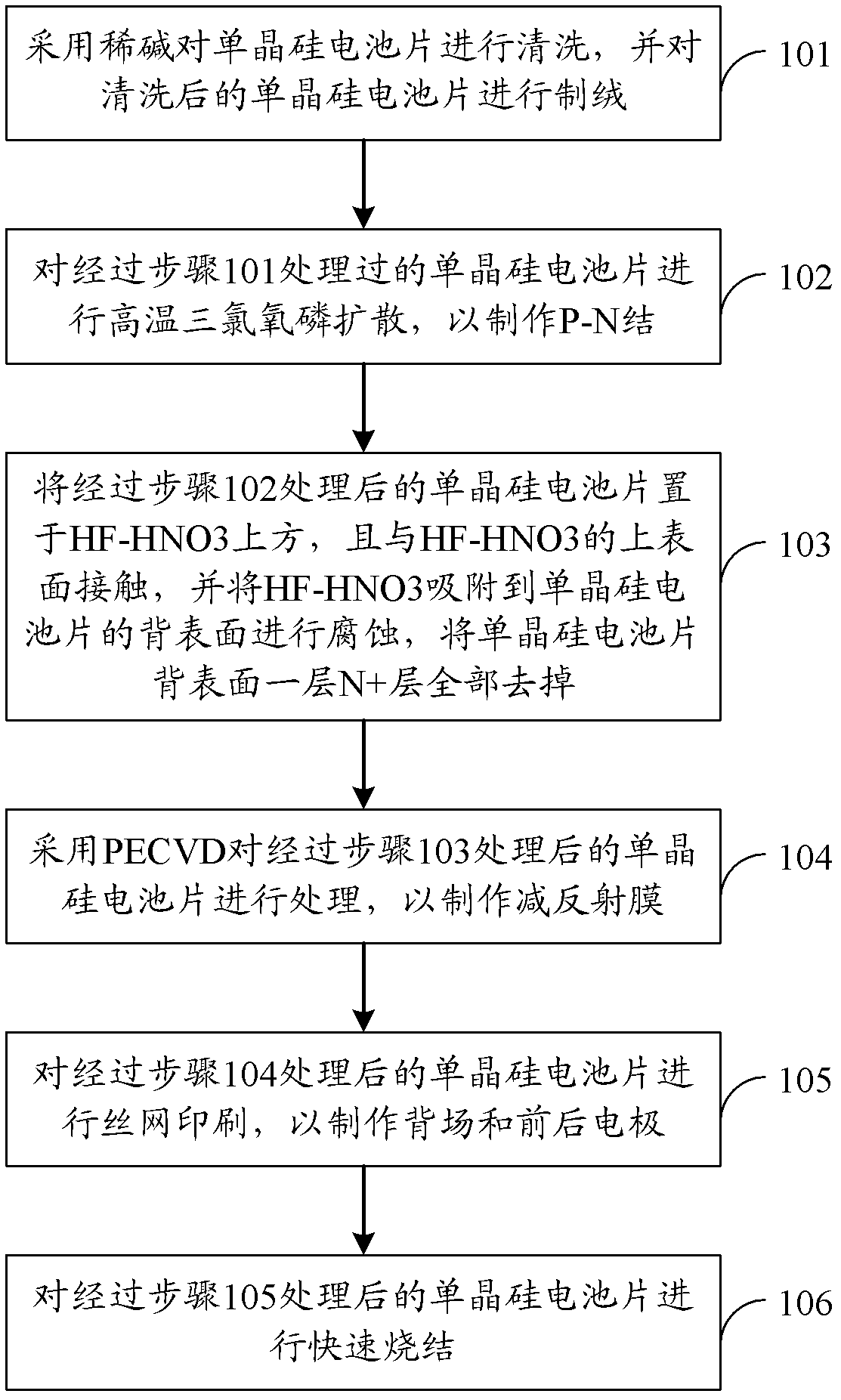Method for separating P-N junction in monocrystal silicon battery piece and method for manufacturing solar battery
A monocrystalline silicon battery, P-N technology, applied in the field of solar cells, can solve the problems of affecting the opening voltage of the battery, affecting the performance of the battery, and easily damaging silicon wafers, etc., and achieve the effects of improving production efficiency, improving battery efficiency, and uniform and smooth contact
- Summary
- Abstract
- Description
- Claims
- Application Information
AI Technical Summary
Problems solved by technology
Method used
Image
Examples
Embodiment Construction
[0021] The following will clearly and completely describe the technical solutions in the embodiments of the present invention with reference to the accompanying drawings in the embodiments of the present invention. Obviously, the described embodiments are only some, not all, embodiments of the present invention. Based on the embodiments of the present invention, all other embodiments obtained by those skilled in the art without creative efforts fall within the protection scope of the present invention.
[0022] Embodiments of the present invention provide a method for separating a P-N junction in a monocrystalline silicon cell and a method for manufacturing a solar cell. Each will be described in detail below.
[0023] A method for separating a P-N junction in a monocrystalline silicon cell, comprising: placing the monocrystalline silicon cell above an acid solution, and absorbing the acid solution to the back surface (i.e. the bottom) of the monocrystalline silicon cell for e...
PUM
 Login to View More
Login to View More Abstract
Description
Claims
Application Information
 Login to View More
Login to View More - R&D
- Intellectual Property
- Life Sciences
- Materials
- Tech Scout
- Unparalleled Data Quality
- Higher Quality Content
- 60% Fewer Hallucinations
Browse by: Latest US Patents, China's latest patents, Technical Efficacy Thesaurus, Application Domain, Technology Topic, Popular Technical Reports.
© 2025 PatSnap. All rights reserved.Legal|Privacy policy|Modern Slavery Act Transparency Statement|Sitemap|About US| Contact US: help@patsnap.com

